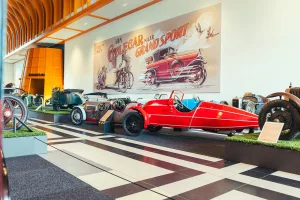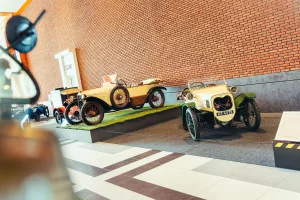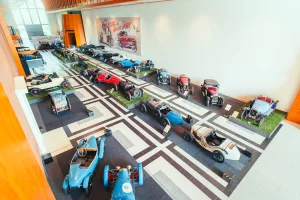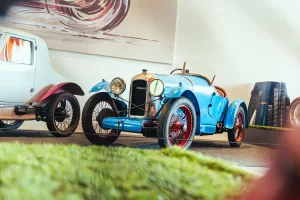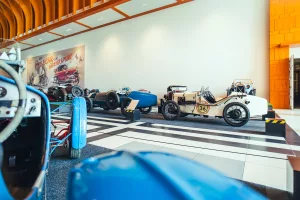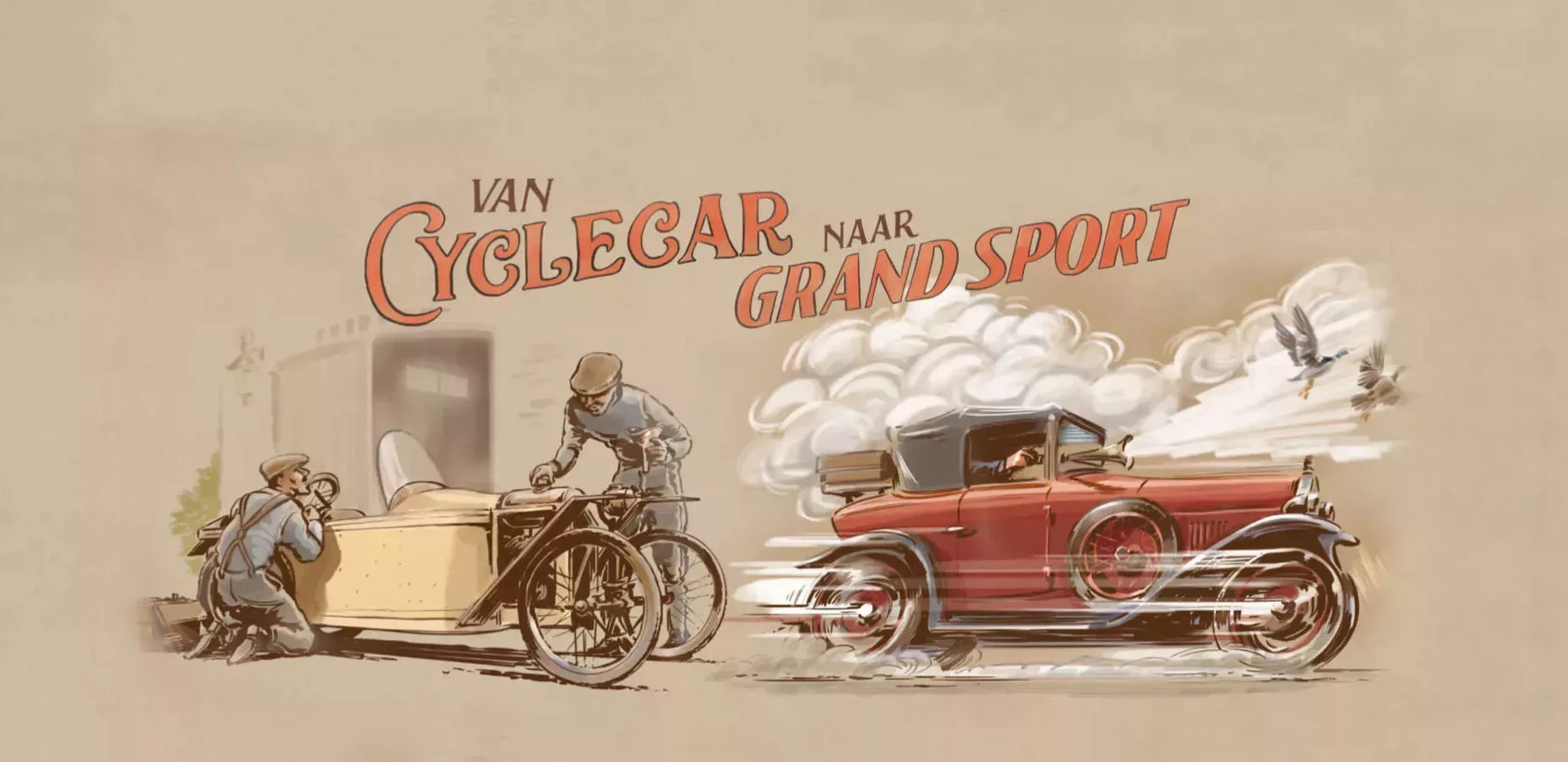From Cyclecar to Grand Sport
Between 7 July and 3 September the Louwman Museum will host an exhibition of Cyclecars and Grand Sports.
Over 30 vehicles will provide a wonderful overview of mobility in the years between 1914 and 1930. It was a period when minimalistic, fragile vehicles could grow into thoroughbred racing cars, some of which even took part in Grand Prix events.
After World War I there was a lack of practically everything in Europe, including motor vehicles. In an attempt to restart the manufacture of small, lightweight cars and at the same time to improve mobility, various countries imposed a lower rate of taxation on cars weighing a maximum of 350 kg with a maximum engine size of 1100 cc that had no more than three seats. Europe witnessed a sudden increase in the number of small factories, workshops, garages and sheds where an enormous variety of small automobiles were built. In greater Paris alone, there were more than 100 small and large car manufacturers at that time. The vehicles that were built to meet the cyclecar regulations often had quite sporty characteristics, due to their low weight and relatively powerful engine. And every make of cyclecar had a special racing model.
In the 1920s not all cars were fitted with a body in the factory. External coachbuilders produced hand-built bodies to order. These of course followed the latest trends and fashions. Such as the skiff, an extremely luxurious body shape popular in the roaring twenties, the age of the Charleston. The skiff was well liked by the (well-to-do) youth of the day. It was a voiturette for the happy few!
In the exhibition we explore the incredible leap in technology witnessed in the construction of motor cars in the early 20th century. So many talented people all over the world tackled the same technical problems. In the Louwman Museum we celebrate the talent and the whole spectrum of creative solutions that went into those prize-winning racing cars. Visually we dissect the cars in the minutest detail. In combination with period images you can imagine yourself as a car builder/inventor in the exciting period 1914-1930.
